The Economics and Statistics Division maintains archives of previous publications for accountability purposes, but makes no updates to keep these documents current with the latest data revisions from Statistics Canada. As a result, information in older documents may not be accurate. Please exercise caution when referring to older documents. For the latest information and historical data, please contact the individual listed to the right.
<--- Return to Archive
For additional information relating to this article, please contact:
June 02, 2020PROXIMITY TO PUBLIC TRANSIT IN CANADA'S METROPOLITAN AREAS Statistics Canada has released data on proximity to public transit, defined as living within 500 metres of a public transit access point. This is combined with data from the 2016 Census about how Canadians commute to work.
Just over 45 per cent of Canada's population are 'commuters' who travel to work, with little variation among provinces and Census Metropolitan Areas.
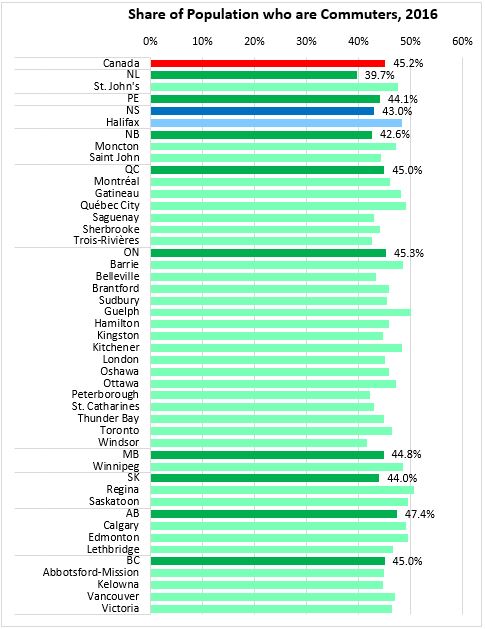
However, access to public transit varies, with higher access observed in Canada's larger urban centres. With a smaller share of provincial populations living outside Census Metropolitan Areas and Census Agglomerations, those living in all four Atlantic Provinces have the least access to public transit. In contrast, those who live in the more urbanized provinces (Ontario, Quebec and British Columbia) have much higher accesss to public transit.
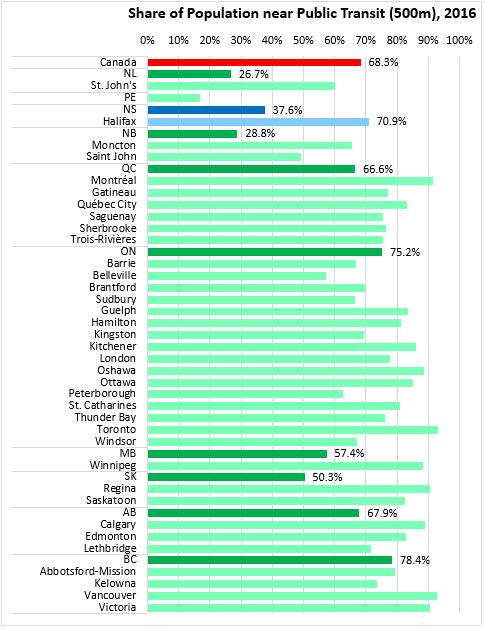
Although over 68 per cent of Canada's population has access to public transit, only 12.4 per cent of Canada's commuters use public transit to get to work. Transit use is higher in the three largest urban areas (Toronto, Montreal and Vancouver) as well as in Calgary and Ottawa-Gatineau. In Halifax, 11.8 per cent of commuters use public transit.
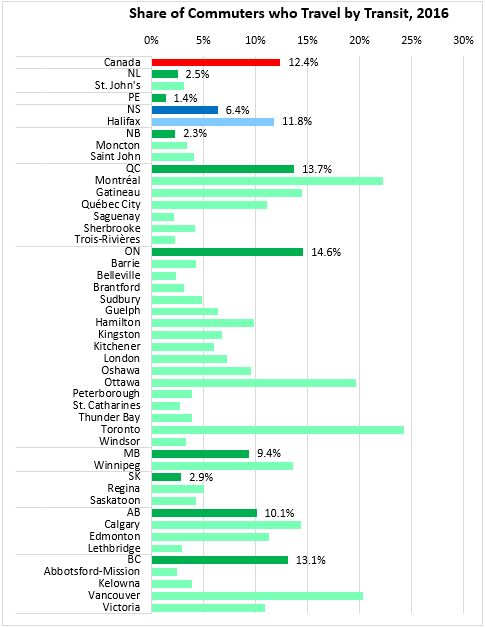
Active transportation means (e.g., walking, bicycle) is used by 6.9 per cent of commuters in Canada. The same share of Nova Scotia commuters use active transportation. However, at 9.2 per cent of commuters, Halifax has the fourth highest use of active transportation after Victoria, Ottawa and Kingston.
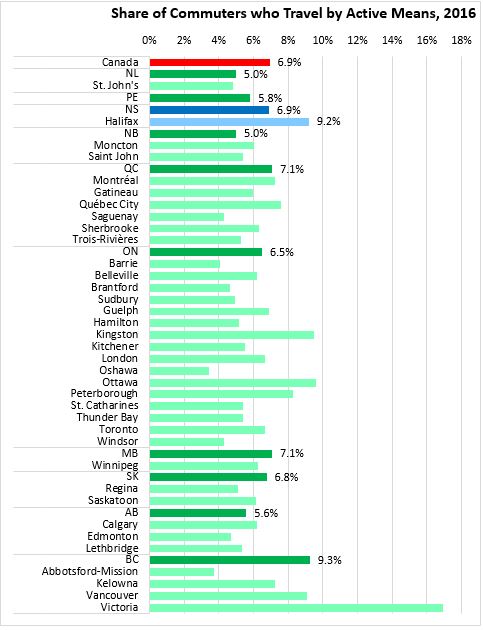
Travelling by car accounts for the largest proportion of commuters (79.5 per cent nationally) in every province and Census Metropolitan Area. Only 68-70 per cent of commuters in Toronto, Montreal, Vancouver, Ottawa and Victoria travel by car.
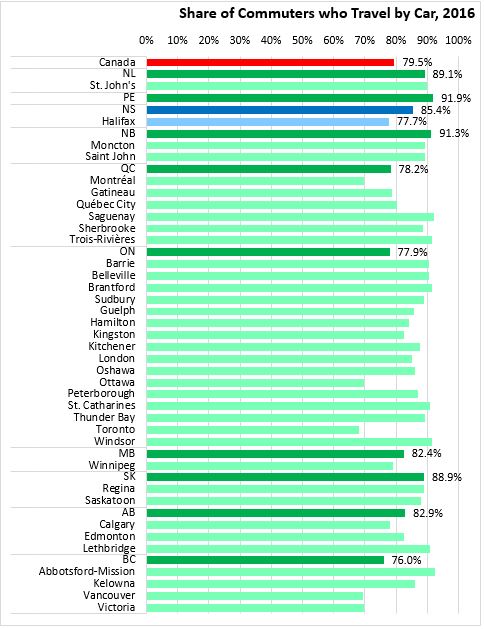
A greater share of the population living in Census Metropolitan Areas and Census Agglomerations is correlated to a higher portion of commuters using public transit and a lower portion using cars for their commute. There is less variation across provinces in use of active transportation for commuting.
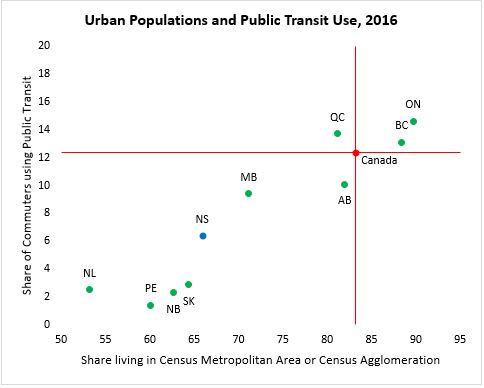
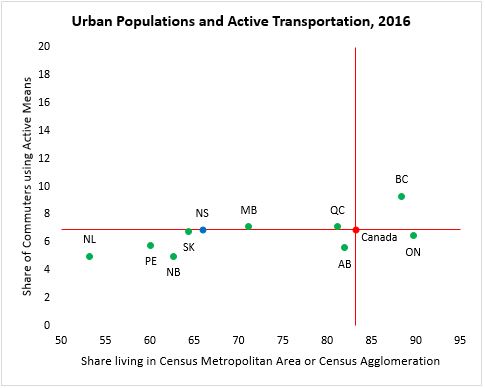
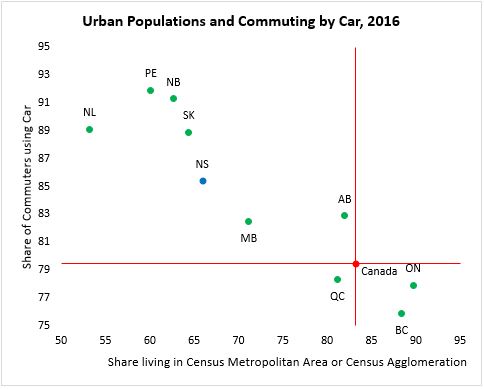
Source: Statistics Canada. Table 23-10-0286-01 Proximity to Public Transportation in Canada's Metropolitan Cities, and related Commuting Data
<--- Return to Archive